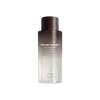What's inside
What's inside
 Key Ingredients
Key Ingredients

 Benefits
Benefits

 Concerns
Concerns

No concerns
 Ingredients Side-by-side
Ingredients Side-by-side

Water
Skin ConditioningBetaine
HumectantGlycerin
HumectantPropanediol
SolventScutellaria Baicalensis Root Extract
AstringentOryza Sativa Extract
AbsorbentPhyllostachys Pubescens Shoot Bark Extract
Skin ConditioningXanthan Gum
EmulsifyingCellulose Gum
Emulsion Stabilising1,2-Hexanediol
Skin ConditioningButylene Glycol
HumectantPulsatilla Koreana Extract
Skin ConditioningZanthoxylum Piperitum Fruit Extract
Skin ConditioningUsnea Barbata Extract
Aspergillus Ferment
Skin ConditioningSodium Gluconate
Skin ConditioningHyaluronic Acid
HumectantBeta-Glucan
Skin ConditioningTamarindus Indica Seed Gum
Emulsion StabilisingPanax Ginseng Root Extract
EmollientGlucose
HumectantCyclodextrin
AbsorbentWater, Betaine, Glycerin, Propanediol, Scutellaria Baicalensis Root Extract, Oryza Sativa Extract, Phyllostachys Pubescens Shoot Bark Extract, Xanthan Gum, Cellulose Gum, 1,2-Hexanediol, Butylene Glycol, Pulsatilla Koreana Extract, Zanthoxylum Piperitum Fruit Extract, Usnea Barbata Extract, Aspergillus Ferment, Sodium Gluconate, Hyaluronic Acid, Beta-Glucan, Tamarindus Indica Seed Gum, Panax Ginseng Root Extract, Glucose, Cyclodextrin
Water
Skin ConditioningButylene Glycol
HumectantGlycerin
HumectantNiacinamide
SmoothingDipropylene Glycol
HumectantBetaine
HumectantPPG-26-Buteth-26
Skin ConditioningHydroxyacetophenone
AntioxidantPEG-40 Hydrogenated Castor Oil
EmulsifyingCaprylyl Glycol
EmollientLimonene
PerfumingLactobacillus/Rye Flour Ferment
Skin ConditioningLactobacillus/Soymilk Ferment Filtrate
Skin ConditioningBacillus
Skin ConditioningAllantoin
Skin ConditioningAdenosine
Skin ConditioningSodium Citrate
BufferingPropanediol
Solvent1,2-Hexanediol
Skin ConditioningDisodium EDTA
Citric Acid
BufferingCitrus Nobilis Peel Oil
MaskingSodium Hyaluronate
HumectantCitrus Aurantium Dulcis Peel Oil
MaskingCitrus Aurantium Bergamia Fruit Oil
MaskingDipotassium Glycyrrhizate
HumectantGluconolactone
Skin ConditioningEthylhexylglycerin
Skin ConditioningRaspberry Ketone
MaskingFolic Acid
Skin ConditioningPantothenic Acid
Skin ConditioningMentha Arvensis Leaf Oil
MaskingPyridoxine
Skin ConditioningThiamine Hcl
MaskingCyanocobalamin
Skin ConditioningRiboflavin
Cosmetic ColorantWater, Butylene Glycol, Glycerin, Niacinamide, Dipropylene Glycol, Betaine, PPG-26-Buteth-26, Hydroxyacetophenone, PEG-40 Hydrogenated Castor Oil, Caprylyl Glycol, Limonene, Lactobacillus/Rye Flour Ferment, Lactobacillus/Soymilk Ferment Filtrate, Bacillus, Allantoin, Adenosine, Sodium Citrate, Propanediol, 1,2-Hexanediol, Disodium EDTA, Citric Acid, Citrus Nobilis Peel Oil, Sodium Hyaluronate, Citrus Aurantium Dulcis Peel Oil, Citrus Aurantium Bergamia Fruit Oil, Dipotassium Glycyrrhizate, Gluconolactone, Ethylhexylglycerin, Raspberry Ketone, Folic Acid, Pantothenic Acid, Mentha Arvensis Leaf Oil, Pyridoxine, Thiamine Hcl, Cyanocobalamin, Riboflavin
 Reviews
Reviews

Ingredients Explained
These ingredients are found in both products.
Ingredients higher up in an ingredient list are typically present in a larger amount.
1,2-Hexanediol is a synthetic liquid and another multi-functional powerhouse.
It is a:
- Humectant, drawing moisture into the skin
- Emollient, helping to soften skin
- Solvent, dispersing and stabilizing formulas
- Preservative booster, enhancing the antimicrobial activity of other preservatives
Betaine is a common humectant (a substance that promotes retention of moisture). It's known to be gentle on the skin and can help balance hydration.
This ingredient is best for improving hydration and soothing irritated skin. Studies also show it helps even out skin tone.
Fun fact: Betaine is naturally created in the skin and body. The kind found within cosmetic products can be either plant-derived or synthetic.
Another name for betaine is trimethylglycine.
Learn more about BetaineButylene Glycol (or BG) is used within cosmetic products for a few different reasons:
Overall, Butylene Glycol is a safe and well-rounded ingredient that works well with other ingredients.
Though this ingredient works well with most skin types, some people with sensitive skin may experience a reaction such as allergic rashes, closed comedones, or itchiness.
Learn more about Butylene GlycolGlycerin is already naturally found in your skin. It helps moisturize and protect your skin.
A study from 2016 found glycerin to be more effective as a humectant than AHAs and hyaluronic acid.
As a humectant, it helps the skin stay hydrated by pulling moisture to your skin. The low molecular weight of glycerin allows it to pull moisture into the deeper layers of your skin.
Hydrated skin improves your skin barrier; Your skin barrier helps protect against irritants and bacteria.
Glycerin has also been found to have antimicrobial and antiviral properties. Due to these properties, glycerin is often used in wound and burn treatments.
In cosmetics, glycerin is usually derived from plants such as soybean or palm. However, it can also be sourced from animals, such as tallow or animal fat.
This ingredient is organic, colorless, odorless, and non-toxic.
Glycerin is the name for this ingredient in American English. British English uses Glycerol/Glycerine.
Learn more about GlycerinPropanediol is an all-star ingredient. It softens, hydrates, and smooths the skin.
It’s often used to:
Propanediol is not likely to cause sensitivity and considered safe to use. It is derived from corn or petroleum with a clear color and no scent.
Learn more about PropanediolWater. It's the most common cosmetic ingredient of all. You'll usually see it at the top of ingredient lists, meaning that it makes up the largest part of the product.
So why is it so popular? Water most often acts as a solvent - this means that it helps dissolve other ingredients into the formulation.
You'll also recognize water as that liquid we all need to stay alive. If you see this, drink a glass of water. Stay hydrated!
Learn more about Water